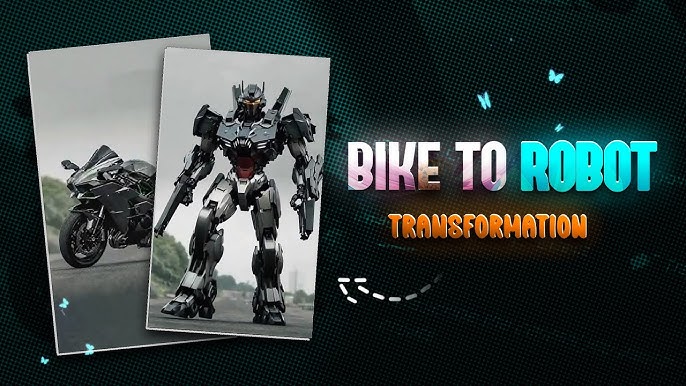Transitional Hooks for Content Creators: The Ultimate Guide
In the ever-evolving landscape of digital content creation, capturing and maintaining your audience’s attention is paramount. As content creators, we often find ourselves struggling to keep our audience engaged, especially in a world filled with distractions. One of the most effective strategies to enhance engagement is the use of transition hooks. This comprehensive guide will explore what transition hooks are, how to use them effectively, and provide practical tips for content creators to elevate their content.
What Are Transitional Hooks?
Transition hooks are phrases, techniques, or devices used to seamlessly connect different parts of your content. They serve as a bridge that guides the audience from one idea to another, making the content flow smoothly. Transition hooks can be particularly useful in various forms of content, including blogs, videos, podcasts, and social media posts.
Why Are Transitional Hooks Important?
- Enhance Engagement: Transition hooks keep the audience invested in your content by creating anticipation and curiosity about what comes next.
- Improve Flow: They help maintain a logical progression in your narrative, making it easier for your audience to follow your ideas.
- Strengthen Retention: By linking concepts together, transition hooks can help reinforce key points, aiding in information retention.
- Establish Professionalism: Well-structured content with effective transitions appears more polished and professional, boosting your credibility as a creator.
Types of Transitional Hooks
Transition hooks can be categorized based on their function and context. Here are some common types:
1. Verbal Hooks
These are verbal cues or phrases used to signal a shift in topic or idea. Examples include:
- “Now that we’ve discussed X, let’s move on to Y.”
- “On the other hand…”
- “That being said…”
2. Visual Hooks
In visual content, hooks can include:
- Text overlays or captions that highlight key points.
- Infographics that summarize the previous section before introducing the next one.
- Creative transitions in videos, such as fades or cuts that signal a change in focus.
3. Emotional Hooks
These are designed to evoke an emotional response and can include:
- Personal anecdotes that relate to the new topic.
- Questions that provoke thought or curiosity.
- Quotes from influential figures that resonate with the content theme.
4. Storytelling Hooks
These hooks use narrative techniques to transition between topics, such as:
- Cliffhangers that create suspense.
- Flashbacks that connect past ideas to current ones.
- Parables or fables that illustrate a point.
How to Use Transition Hooks Effectively
To maximize the impact of transition hooks in your content, consider the following strategies:
1. Know Your Audience
Understanding your audience’s preferences and expectations is key. Tailor your transition hooks to resonate with them, whether they prefer a casual tone or a more formal approach.
2. Be Consistent
Maintain a consistent style throughout your content. If you start with a conversational tone, keep that tone in your transitions to avoid jarring shifts that could confuse the audience.
3. Use Variety
Don’t rely on the same transition hooks repeatedly. Mixing up your verbal, visual, emotional, and storytelling hooks will keep your content fresh and engaging.
4. Practice Timing
Timing is crucial in content delivery. Ensure your transition hooks are strategically placed to maximize their effect. For instance, using a hook just before a key point can create anticipation.
5. Make It Relatable
Incorporate relatable examples or experiences in your transition hooks. This creates a connection with your audience, making them more likely to engage with the content.
6. Incorporate Questions
Questions are powerful tools for transitioning. They stimulate curiosity and invite your audience to think critically about the content. For example, “Have you ever wondered why…?”
Practical Examples of Transition Hooks
Let’s look at some practical examples of transition hooks across different content types.
Blog Post Example
Introduction to Healthy Eating:
- “In our previous post, we explored the benefits of mindfulness. Now, let’s dive into how healthy eating can transform your life.”
Video Content Example
Fitness Routine Transition:
- “Now that you’ve warmed up, let’s transition to our main workout. Ready to break a sweat?”
Podcast Example
Discussion Topic Shift:
- “So, we’ve covered the basics of social media marketing. But what about the emerging trends you need to watch out for?”
Social Media Example
Engagement Post:
- “We’ve shared our top five tips for productivity. Which tip surprised you the most? Comment below and let’s discuss!”
Tips for Creating Effective Transition Hooks
- Use Clear Language: Avoid jargon or complex phrases that could confuse your audience. Keep it simple and straightforward.
- Visual Cues: In video or visual content, use graphics or animations to reinforce your transitions. This adds an extra layer of engagement.
- Reiterate Key Points: Before transitioning, briefly summarize the previous section to reinforce understanding and create a smooth transition.
- Create a Narrative Arc: For longer content, develop a narrative arc that naturally leads from one section to the next. This helps maintain a cohesive flow.
- Solicit Feedback: Engage your audience by asking for their thoughts on your transition hooks. This can provide valuable insights for improvement.
Analyzing Successful Content Creators
To further understand the effectiveness of transition hooks, let’s analyze a few successful content creators known for their engaging content:
1. Marie Forleo
Marie Forleo, a well-known entrepreneur and speaker, masterfully uses transition hooks in her videos. She often summarizes key points before moving on to the next topic, which reinforces her message and keeps her audience engaged.
2. Neil Patel
In his marketing blogs and videos, Neil Patel employs a mix of verbal and visual hooks. He frequently uses questions to transition between sections, prompting viewers to think critically about the material.
3. TED Talks
TED speakers excel at storytelling hooks. They often begin with a personal anecdote, creating a connection with the audience before transitioning to the main message.
Conclusion
Transition hooks are essential tools for content creators aiming to enhance engagement and deliver a cohesive narrative. By understanding their importance, employing various types, and using them effectively, you can significantly improve the quality of your content.
Remember to keep experimenting with different transition hooks to find what resonates best with your audience. As you refine your skills, you’ll find that well-crafted transitions not only make your content more engaging but also elevate your overall storytelling abilities.
Final Thoughts
In a world where attention spans are fleeting, mastering the art of transition hooks can set you apart as a content creator. Whether you’re crafting a blog post, producing a video, or recording a podcast, remember that the way you connect ideas can be just as important as the ideas themselves. So, get creative with your transitions and watch your audience engagement soar!



Fabulous, what a web site it is! This weblog gives helpful facts to us,
keep it up.
Every weekend i used to go to see this web page, for the reason that i want enjoyment,
as this this web site conations in fact nicematerial
too.
Thank you for your help and this post. It’s been great.
Thank you for your post. I really enjoyed reading it, especially because it addressed my issue. It helped me a lot and I hope it will also help others.
Very nice editing app